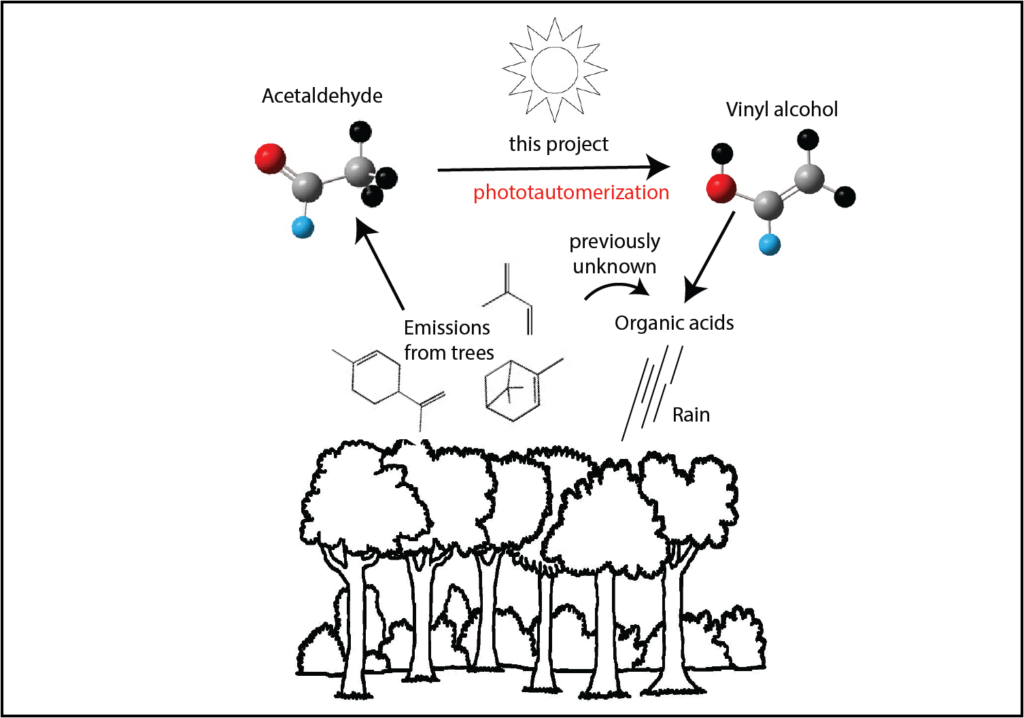Laboratory Astrophysics

Space is made up of an over-whelming variety of molecules. They exist in the interstellar medium, in circumstellar clouds and in exoplanet atmospheres. Astronomers measure signatures of these molecules, but it is hard to collect samples to discover what they are. We reproduce astrophysical conditions in our lab (e.g. ultrahigh vacuum, VUV light) and measure spectra of possible astronomical molecules. Find a match - find a molecule!
Principal Investigators: Tim Schmidt, Chris Hansen, Scott Kable
Example papers
Molecular Reaction Dynamics

We use cutting-edge experiments and theory to unravel the molecular processes underpinning chemical reactivity. We perform exquisitely detailed, quantum state-resolved, molecular beam experiments to discover the hidden secrets of how molecules react. This research theme provides fundamental knowledge that underpins other themes, including Computational Photochemistry and Modelling, Atmospheric Chemistry and Laboratory Astrophysics.
Principal investigators: Scott Kable, Chris Hansen, Chris Medcraft, Meredith Jordan
Example papers:
Exciton Science

For more information about the exciting work occurring in Exciton science, visit our website
Principal investigators: Tim Schmidt
Example papers:
Computational Photochemistry and Atmospheric Modelling

We use state-of-the-art computational models to evaluate the repercussions of unexplored photochemistry of gases in the atmosphere. We are ultimately seeking to improve the performance of the models and the way they represent atmospheric chemistry. The types of models we implement include chemically explicit mechanisms (MCM), and 3D atmospheric models (GEOS-Chem) to account for both robust chemistry and realistic atmospheric global phenomena by integrating chemistry and transport.
Principal investigators: Meredith Jordan, Scott Kable
Example papers:
Atmospheric Chemistry Mechanisms and Dynamics

Atmospheric models are powerful tools to understand and predict atmospheric events at local and global scale (see "modelling" theme). However, the models are only as good as the underlying chemistry that they contain. In the "reaction dynamics" theme, we discover new chemical mechanisms. In this theme, we explore whether these new chemical pathways are relevant under atmospheric conditions. Problems that we are currently exploring include the formation of organic acids, nucleation of aerosols, and the chemistry of OH and HO2 radicals. Techniques include laser photolysis-FTIR spectroscopy and microwave spectroscopy of clusters.
Principal investigators: Scott Kable, Chris Hansen, Meredith Jordan
Example papers:
Theoretical Chemistry

Our group has a very strong theoretical emphasis. Our theoretical research can both change the way chemists think about the field, and provide a firm theoretical unpinning of complex experimental data. We develop new theoretical understanding of fundamental chemical reactions, theoretical interpretation of how catalysts work, and deep theoretical understanding in support of experiments in photovoltaics, reaction dynamics and astrochemistry.
Principal investigators: Meredith Jordan, Tim Schmidt
Example papers:
